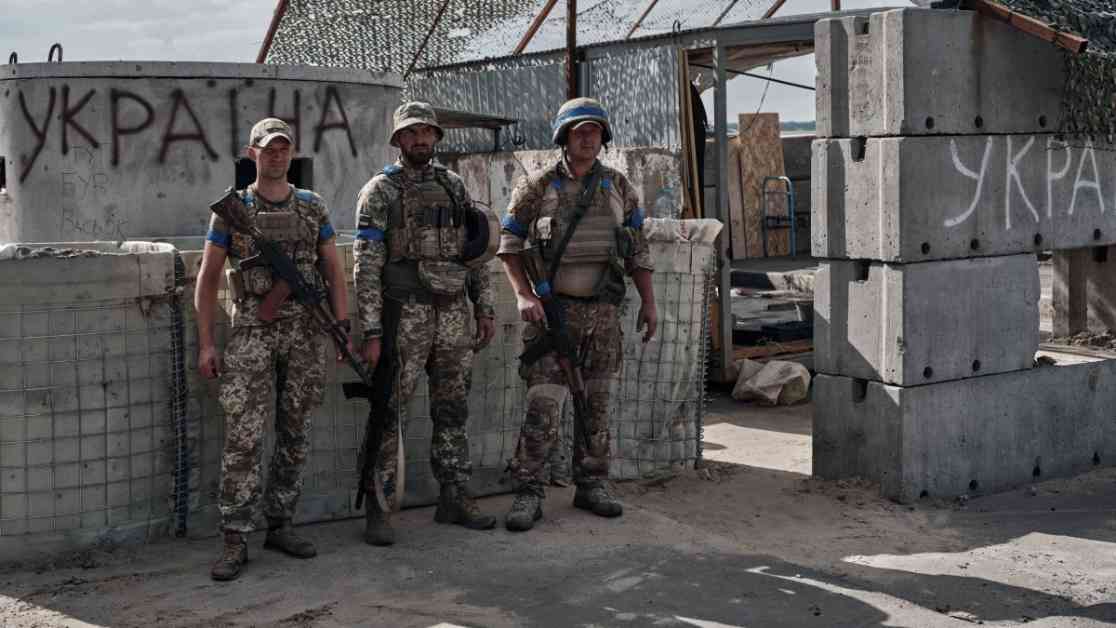Ukraine’s Strategic Move in the Kursk Region
Ukraine’s military has made a significant strategic move in the Kursk region of Russia by destroying a key bridge that crosses the Seym river near the town of Glushkovo. This action has not only disrupted Russian supply lines but also impacted their military strategy in the area. The destruction of the bridge has cut off part of the local district, making it difficult for Russian troops to receive necessary supplies and reinforcements.
The Kursk regional governor, Alexei Smirnov, confirmed the destruction of the bridge and highlighted the importance of this operation. Russian officials have expressed concern over the impact of this move on their military operations in the region. The bridge had been a vital link for the Kremlin to supply troops in the area, and its destruction has created obstacles for replenishing their resources.
Russian military bloggers have also weighed in on the significance of the bridge’s destruction. They believe that cutting off good crossings will isolate the Russian Armed Forces defending in the Glushkovo district. This move by Ukraine is seen as a strategic maneuver to weaken Russian forces in the region and gain an advantage in the ongoing conflict.
President Zelensky’s Response
Ukraine’s President Volodymyr Zelensky has praised the progress made by Ukrainian troops in the Kursk region and emphasized the captured territories as an “exchange fund” that could be used in negotiations with Moscow. Zelensky has described Russia’s losses in the Kursk region as beneficial for Ukraine’s defense, citing the disruption of Russian army logistics and depletion of their reserves.
In a recent address, Zelensky expressed optimism about Ukraine’s military advancements in the region and the potential for further gains. He highlighted the importance of strengthening positions in Kursk and utilizing captured territories as leverage in negotiations with Russia. The Ukrainian president’s strategic approach to the conflict reflects a calculated effort to weaken Russian forces and secure favorable outcomes for Ukraine.
Advancements in the Kursk Region
Ukrainian army chief Oleksandr Syrskyi has reported significant advancements in the Kursk region, with Kyiv’s forces making progress in key areas. Since the incursion into Russia began 11 days ago, Ukrainian troops have advanced between one and three kilometers in some locations, expanding their control over 82 settlements across 1,150 square kilometers.
The Ukrainian foreign ministry has highlighted the territorial gains made by Ukraine in the Kursk region, surpassing Russia’s advancements in Ukraine this year. This progress demonstrates Ukraine’s military capabilities and determination to push back against Russian aggression. The ongoing conflict in the Kursk region has intensified as both sides seek to gain strategic advantages and control over key territories.
President Zelensky has been briefed on the latest developments in the Kursk region, including reports of fighting near Malaya Loknya and efforts to capture Russian prisoners. The Ukrainian military’s focus on capturing prisoners and disrupting Russian supply routes reflects a coordinated strategy to weaken Russian forces and secure territorial gains in the region.
In response to Ukrainian attacks, Russia’s Defense Ministry has vowed a “worthy response” to the incursion in the Kursk region. Russian troops have repelled Ukrainian advances in several areas, including Gordeevka and Russkoe Porechnoe. Both sides are engaged in intense military operations as they vie for control over strategic territories and supply routes in the region.
Kyiv Air Force commander Mykola Oleshchuk has highlighted the role of aviation in targeting enemy supply routes and logistics centers. The use of air power in the conflict has intensified as both sides seek to gain an advantage in the Kursk region. Oleshchuk’s emphasis on disrupting the enemy’s infrastructure underscores the importance of cutting off Russian supply lines to weaken their military capabilities.
Conclusion
The conflict in the Kursk region between Ukraine and Russia continues to escalate, with strategic moves and territorial gains shaping the dynamics of the ongoing conflict. Ukraine’s destruction of a key bridge in the region has disrupted Russian supply lines and impacted their military strategy, creating challenges for the Kremlin in maintaining troop reinforcements and resources.
President Zelensky’s strategic approach to the conflict underscores Ukraine’s determination to push back against Russian aggression and secure territorial gains in the region. The advancements made by Ukrainian forces in the Kursk region demonstrate their military capabilities and willingness to engage in strategic maneuvers to weaken Russian forces.
As the conflict unfolds, both sides are engaged in intense military operations to gain control over key territories and supply routes. The use of air power and ground forces has intensified as Ukraine and Russia seek to gain an advantage in the Kursk region. The outcome of the conflict remains uncertain, but the strategic moves and territorial gains made by Ukraine indicate a shifting dynamic in the ongoing conflict.













